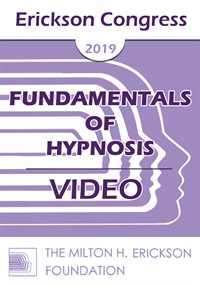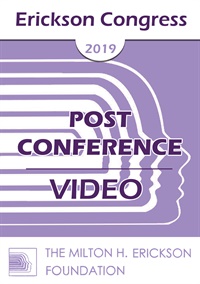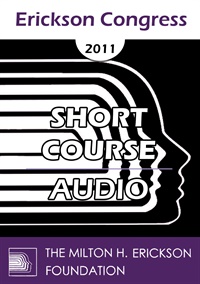
- Average Rating:
- Not yet rated
- Topic Areas:
- Hypnotherapy | Short Courses | Psychodrama | Communication | Ericksonian Hypnosis and Therapy Techniques | Hypnosis | Hypnotic Phenomena
- Categories:
- Erickson Congress | Erickson Congress 2011
- Faculty:
- Beatriz Suarez Buratti, MSC, MSc
- Duration:
- 1:27:03
- Format:
- Audio Only
- Original Program Date:
- Dec 09, 2011
- Short Description:
- Insight usually offers little help to clients willing to make changes in their lives or in their professional careers; being able to explore the experience of solving a dilemma is needed. This short course will explore effective therapeutic interventions to assist clients in breaking out the frustration circle and helping them bring about creative and adaptive choices by means of Ericksonian hypnosis and dyadic psychodramatic techniques like therapist sculpting and role reversal.
- Price:
- $15.00 - Base Price
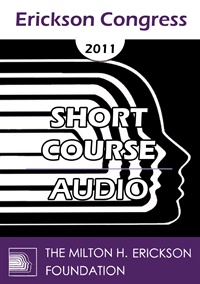
- Average Rating:
- Not yet rated
- Topic Areas:
- Short Courses | Addiction | Hypnotherapy
- Categories:
- Erickson Congress | Erickson Congress 2011
- Faculty:
- Jörg Albers, Dipl. Psych
- Duration:
- 1:08:27
- Format:
- Audio Only
- Original Program Date:
- Dec 09, 2011
- Short Description:
- IC11 Short Course 45 - Resilience and Resourcefulness: Applying Resources at the Peak of Craving - Jörg Albers, Dipl. Psych This approach combines the exposure-response prevention paradigm from behavioral therapy with hypnotherapeutic intervention. The program contains six sessions with different topics. In each session, consecutive exposure to substance and triggers alters with rapid installation of ideodynamic resources. A less resilient patient learns to apply resourcefulness at the right time.
- Price:
- $15.00 - Base Price
Tags: Addiction Hypnotherapy
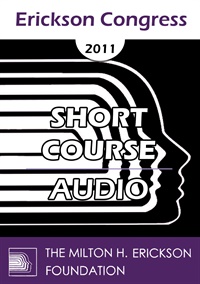
- Average Rating:
- Not yet rated
- Topic Areas:
- Short Courses | Hypnosis | Mind-Body | Hypnotherapy | Anxiety | Depression | Eating Disorders
- Categories:
- Erickson Congress | Erickson Congress 2011
- Faculty:
- Brigitta Loretan-Meier, MS
- Duration:
- 1:33:20
- Format:
- Audio Only
- Original Program Date:
- Dec 09, 2011
- Short Description:
- Irritable Bowel Syndrome (IBS) is one of the most common gastrointestinal disorders. This presentation explains an interdisciplinary approach to dealing with serious problems of IBS-patients. We learn that there are multiple expectations and needs of the clients with a high level of dysfunctional symptoms, as well as multiple stress factors, anxiety and depression. How to regain a better quality of life scores? The importance of focusing the invisible, the affective part of the IBS difficulties is complicated. While setting realistic goals, a new approach leads to body self-regulation with different bodywork techniques and hypnotherapeutic strategies.
- Price:
- $15.00 - Base Price
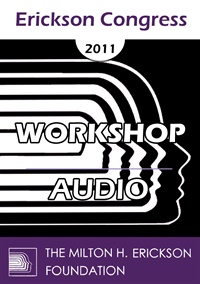
- Average Rating:
- Not yet rated
- Topic Areas:
- Workshops | Psychoanalysis | Psychodrama | Hypnotherapy | Utilization | Multicultural
- Categories:
- Erickson Congress | Erickson Congress 2011
- Faculty:
- Eric Greenleaf, PhD
- Duration:
- 59 Minutes
- Format:
- Audio Only
- Original Program Date:
- Dec 07, 2011
- Short Description:
- From psychoanalysis, to psychodrama, to hypnosis, therapists have employed ritual and ceremony to aid their patients. This workshop will provide a hypnotic experience based on the Balinese Cleansing Ceremony. Utilization of available and invented ceremonies from participants’ lives will also be developed as aides to therapy, and practiced by participants.
- Price:
- $20.00 - Base Price
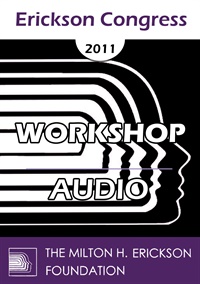
- Average Rating:
- Not yet rated
- Topic Areas:
- Hypnotherapy | Trance | Workshops | Art and Creativity | Ericksonian Hypnosis and Therapy Techniques | Music | Seeding | Mind-Body | Resistance
- Categories:
- Erickson Congress | Erickson Congress 2011
- Faculty:
- Anita Jung, M.S.
- Duration:
- 59 Minutes
- Format:
- Audio Only
- Original Program Date:
- Dec 07, 2011
- Short Description:
- Music within a hypnotherapy model functions as a catalyst accentuating the nuances of seeding, guiding associations, and deepening trance states. Participants will experience and practice how to musically transform mood states, utilize music creatively and effectively within a hypnotherapy session, and explore the latest research on the melody-mind-body link.
- Price:
- $20.00 - Base Price
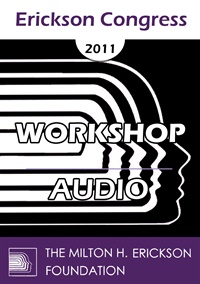
- Average Rating:
- Not yet rated
- Topic Areas:
- Workshops | Children and Adolescent Therapy | Ericksonian Hypnosis and Therapy Techniques | Brief Therapy | Hypnotherapy | Psychosomatics
- Categories:
- Erickson Congress | Erickson Congress 2011
- Faculty:
- Charlotte Wirl
- Duration:
- 59 Minutes
- Format:
- Audio Only
- Original Program Date:
- Dec 07, 2011
- Short Description:
- Brief hypnotherapy is particularly suited for children and adolescents with psychosomatic disorders, be-cause it exploits their natural abilities to fall into trance and uses a language of symbols and metaphors. It is based on the Ericksonian belief in the abilities of a child and is astonishing in its effectiveness.
- Price:
- $20.00 - Base Price
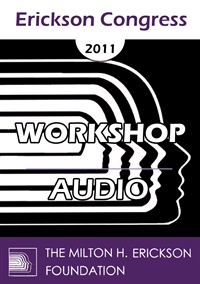
- Average Rating:
- Not yet rated
- Topic Areas:
- Meditation, Spirituality and Yoga | Hypnosis | Workshops | Metaphors | Hypnotherapy
- Categories:
- Erickson Congress | Erickson Congress 2011
- Faculty:
- Jorge Abia, MD | Rafael Nuñez, MA
- Duration:
- 59 Minutes
- Format:
- Audio Only
- Original Program Date:
- Dec 07, 2011
- Short Description:
- Departing from neurophysiological differences between Hypnosis versus Meditation we will focus on metaphor creating and its clinical application. Participants will learn a systematic technique to help patient in order to create solving problems metaphors.
- Price:
- $20.00 - Base Price
- Average Rating:
- Not yet rated
- Topic Areas:
- Fundamentals of Hypnosis | Hypnosis | Hypnotic Phenomena | Hypnotherapy | Ericksonian Hypnosis and Therapy Techniques
- Categories:
- Erickson Congress | Erickson Congress 2019
- Faculty:
- Dan Short, PhD
- Course Levels:
- Master Degree or Higher in Health-Related Field
- Duration:
- 2 Hours 1 Minutes
- Format:
- Audio and Video
- Original Program Date:
- Dec 15, 2019
- Short Description:
- Erickson resisted standardized hypnotic protocols because he found that everyone responded to hypnosis uniquely. Rather than seeking to force his preferred hypnotic phenomena, he cultivated whatever came naturally. Fortunately, clinical objectives, such as pain relief, can be achieved using a variety of hypnotic phenomena. This session will identify three broad classes of hypnotic experiencing and provide guidance on how to identify natural predispositions.
- Price:
-
Sale is $29.00
price reduced from Base Price - $59.00
- Average Rating:
- Not yet rated
- Topic Areas:
- Master Classes | Ericksonian Psychotherapy | Psychotherapy | Brief Therapy | Hypnotherapy | Self-Relations | Utilization
- Categories:
- Erickson Congress | Erickson Congress 2019
- Faculty:
- Bill O'Hanlon, MS | Jeffrey Zeig, PhD
- Course Levels:
- Master Degree or Higher in Health-Related Field
- Duration:
- 4 Hours 49 Minutes
- Format:
- Audio and Video
- Original Program Date:
- Dec 16, 2019
- Short Description:
- Ericksonian hypnotherapy and the Self-Relations approach are experiential methods of change. In combination they can be synergistic. Psychotherapy is best when clients have a first-hand experience of an alive therapeutic process. Such dynamic empowering experiences pave the way for dynamic understandings. Bill O’Hanlon and Jeffrey Zeig will engage with each other and the participants to examine commonalities and differences in their work.
- Price:
- $59.00 - Base Price

- Average Rating:
- Not yet rated
- Topic Areas:
- Short Courses | Hypnotherapy | Aging and Mortality | Communication | Family Therapy
- Categories:
- Erickson Congress | Erickson Congress 2019
- Faculty:
- Stefan Hammel, MTh
- Duration:
- 1 Hour 29 Minutes
- Format:
- Audio Only
- Original Program Date:
- Dec 12, 2019
- Short Description:
- What can we do for dying people and their families in addition to palliative care? What is helpful to communicate during the last hours of life? In this workshop we bring integrate the millennium-old pictorial traditions of religion with techniques of hypnotherapy including pacing and leading, utilizing metaphors, and the evocation of values and convictions of dying patients with their families.
- Price:
- $15.00 - Base Price
Please wait ...


